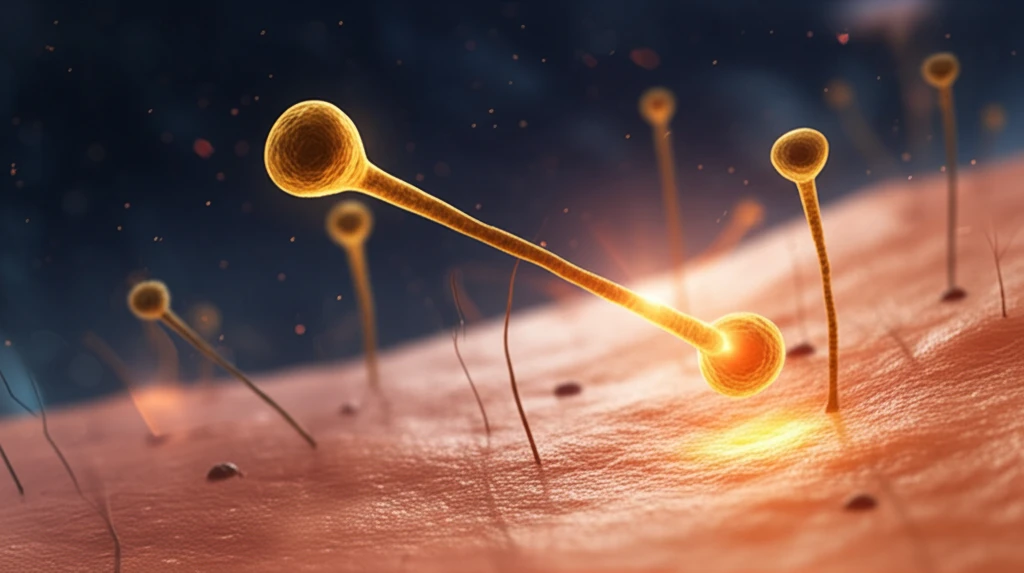
Early Cancer Detection: How Gold Nanorods Could Be the Key
"A groundbreaking method uses targeted gold nanorods and diffusion reflection to detect cancer earlier and more accurately, offering new hope for treatment."
For years, scientists have been searching for ways to detect cancer earlier, when treatment is more likely to be successful. Traditional methods often catch the disease after it has already progressed, reducing the chances of a full recovery. But what if there was a way to identify cancerous cells at their earliest stages, using a simple and non-invasive technique?
A promising new approach is emerging, one that uses the unique properties of gold nanorods (GNRs) to highlight cancerous tissues. These tiny rods, when targeted to specific cancer cells, can dramatically change how light interacts with those cells, making them easy to spot. This method, known as diffusion reflection measurement, could revolutionize cancer detection, offering a more sensitive, specific, and patient-friendly way to diagnose the disease.
Imagine a world where cancer is detected so early that treatment is almost always effective. This vision may be closer than we think, thanks to the innovative use of nanotechnology in medical diagnostics. This article will explore how gold nanorods are changing the landscape of cancer detection, offering new hope for earlier and more accurate diagnoses.
The Science Behind Gold Nanorods and Cancer Detection

The new method hinges on the distinctive optical properties of gold nanorods. These tiny structures are designed to absorb light intensely, especially when tuned to specific wavelengths. Researchers can target these nanorods to cancerous cells by attaching them to antibodies that recognize proteins found on the surface of cancer cells. Once the nanorods accumulate in the tumor, they act as contrast agents, making the cancerous tissue stand out from the surrounding healthy tissue.
- Early Detection: Catches cancer in its earliest stages.
- Non-Invasive: Reduces patient discomfort and risk.
- High Sensitivity: Accurately identifies cancerous cells.
- Targeted Approach: Specifically targets cancer cells, minimizing side effects.
The Future of Cancer Diagnostics
This innovative method offers a promising step towards earlier and more accurate cancer detection. By leveraging the unique properties of gold nanorods and diffusion reflection measurements, doctors may soon have a powerful new tool in the fight against cancer, leading to improved treatment outcomes and saving lives.
